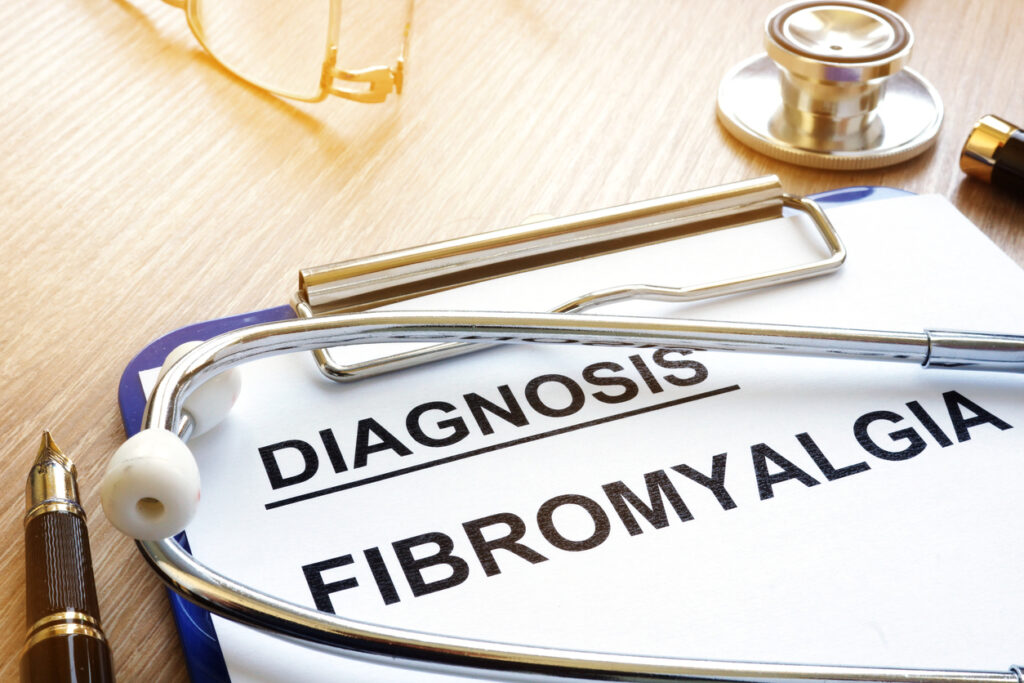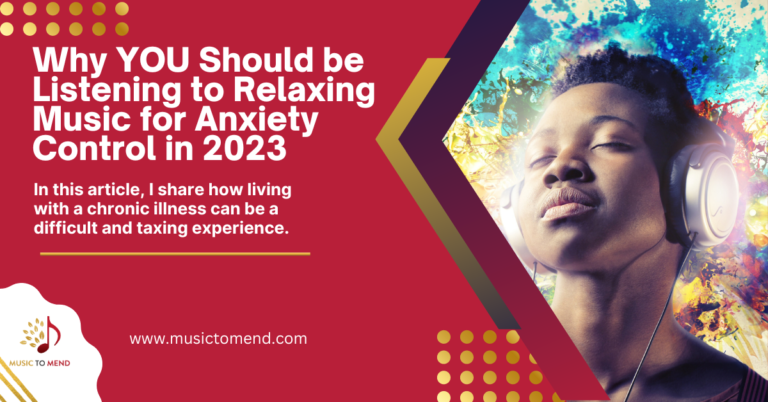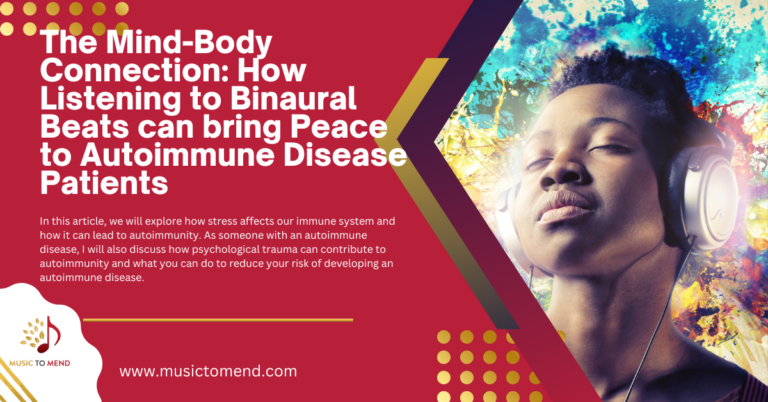3 Eye-Opening Ways YOU Can Use Music to Help YOU Cope with Fibromyalgia
In today’s post, I’ll be sharing 3 eye-opening ways music can help you cope with your fibromyalgia healing journey. Unfortunately, as is the case with many of us, it can take years to get an accurate diagnosis of an autoimmune disease. In my case, my diagnosis of rheumatoid arthritis took about 3 years. The problem with this is that many doctors mistakenly label a patient as having fibromyalgia. That’s because both fibromyalgia and RA have similar symptoms such as pain, stiffness, fatigue, and decreased mobility. However, RA occurs due to inflammation in joint tissue, while fibromyalgia pain is due to a disorder of the neurological system.
Although some people can sometimes differentiate between the conditions by assessing their symptoms, I couldn’t tell the difference. It was all just excruciating pain to me!

Fibromyalgia is a chronic pain disorder that affects the musculoskeletal system. It is characterized by widespread muscle pain, fatigue, and tenderness in different areas of the body. It is often accompanied by chronic fatigue syndrome (CFS), which can also cause extreme exhaustion, difficulty sleeping, and mental fog. Fibromyalgia is associated with the hypothalamic-pituitary-adrenal (HPA) axis.
Fibromyalgia is a chronic condition characterized by widespread musculoskeletal pain and fatigue. Recent research has demonstrated that the hypothalamic-pituitary-adrenal (HPA) axis is associated with fibromyalgia and may be involved in the pathogenesis of this disorder.
Fibromyalgia is a chronic pain disorder that affects millions of people around the world. Although the exact cause of fibromyalgia is unknown, there are certain risk factors that can increase the likelihood of developing this condition. These include gender differences, age, family history, and certain medical conditions. In addition, there are lifestyle factors such as stress and lack of exercise that can increase one’s risk for developing fibromyalgia.
Managing the Effects of Fibromylagia
Fibromyalgia is a chronic and painful condition that can cause widespread pain and fatigue. It can be difficult to diagnose due to its wide range of symptoms and overlap with other conditions. However, there are ways to manage the effects of fibromyalgia, including lifestyle changes, medications, physical therapy, and cognitive-behavioral therapy. This article will discuss the various methods for managing fibromyalgia so that those suffering from this condition can find relief.
The Benefits of Incorporating Music Therapy into Your Fibromyalgia Treatment Plan
Music therapy is an effective and beneficial treatment option for those living with fibromyalgia. It can help reduce pain, stress, and anxiety while increasing relaxation, mood, and overall quality of life. Music therapy can be used in combination with other treatments such as physical therapy, massage, and medication to create a comprehensive treatment plan. By incorporating music into your fibromyalgia treatment plan you can experience the benefits of increased relaxation techniques, improved sleep quality, and reduced stress levels.
Benefit #1 – Music Can Reduce Stress and Anxiety to Help Manage Chronic Pain
Music has been used for centuries to help people manage stress and anxiety, and now it can be used to help with chronic pain management. Studies have shown that music can reduce stress and anxiety levels, which can in turn reduce the intensity of chronic pain. Listening to calming music can also help you relax and focus on other activities, allowing you to better manage your pain. Additionally, listening to music can provide emotional support during difficult times, helping you cope with your emotions as well as your physical symptoms.
Benefit #2 – Music Can Improve Focus & Attention to Enhance Cognitive Functioning When Dealing with Pain
Music has been used for centuries to help people relax and focus. Recent studies have shown that music can play an important role in helping people manage pain. Through the use of rhythm and tempo, focusing music can help improve concentration, allowing individuals to better focus on the task at hand. This improved focus can then lead to enhanced cognitive functioning, allowing those dealing with pain to better manage their symptoms. By listening to music with a specific tempo and rhythm, individuals can reduce stress levels and increase their attention span, leading to improved cognitive functioning when dealing with pain.
Benefit #3 – Music Can Provide Emotional Support During Times Of Physical Discomfort & Suffering
Music has long been known to have the power to soothe and heal. It can provide emotional support during times of physical discomfort and suffering. Sound therapy, which is the use of sound frequencies to promote relaxation and healing, has been used for centuries to help people cope with pain. Studies have shown that music can reduce stress levels, lower blood pressure, and even reduce the perception of pain. This makes it an invaluable tool for those who suffer from chronic pain or other physical ailments. Music can also be used as a form of self-care and emotional support during times of distress or suffering.
Additionally, binaural beats in the alpha frequencies 8 – 13 Hz, are believed to encourage relaxation, promote positivity, and help in decreasing anxiety. Binaural beats in the lower beta frequencies 14 – 30 Hz have been linked to increased concentration and alertness, problem-solving, and improved memory.
BONUS: Meditation music, relaxing music to help you manifest peace and healing.

Finally, if you would like to learn to play an instrument but don’t know which instrument to choose, you can watch my video by clicking here.
I hope you found this article helpful and informative.
Until next time, stay well.
Bea







